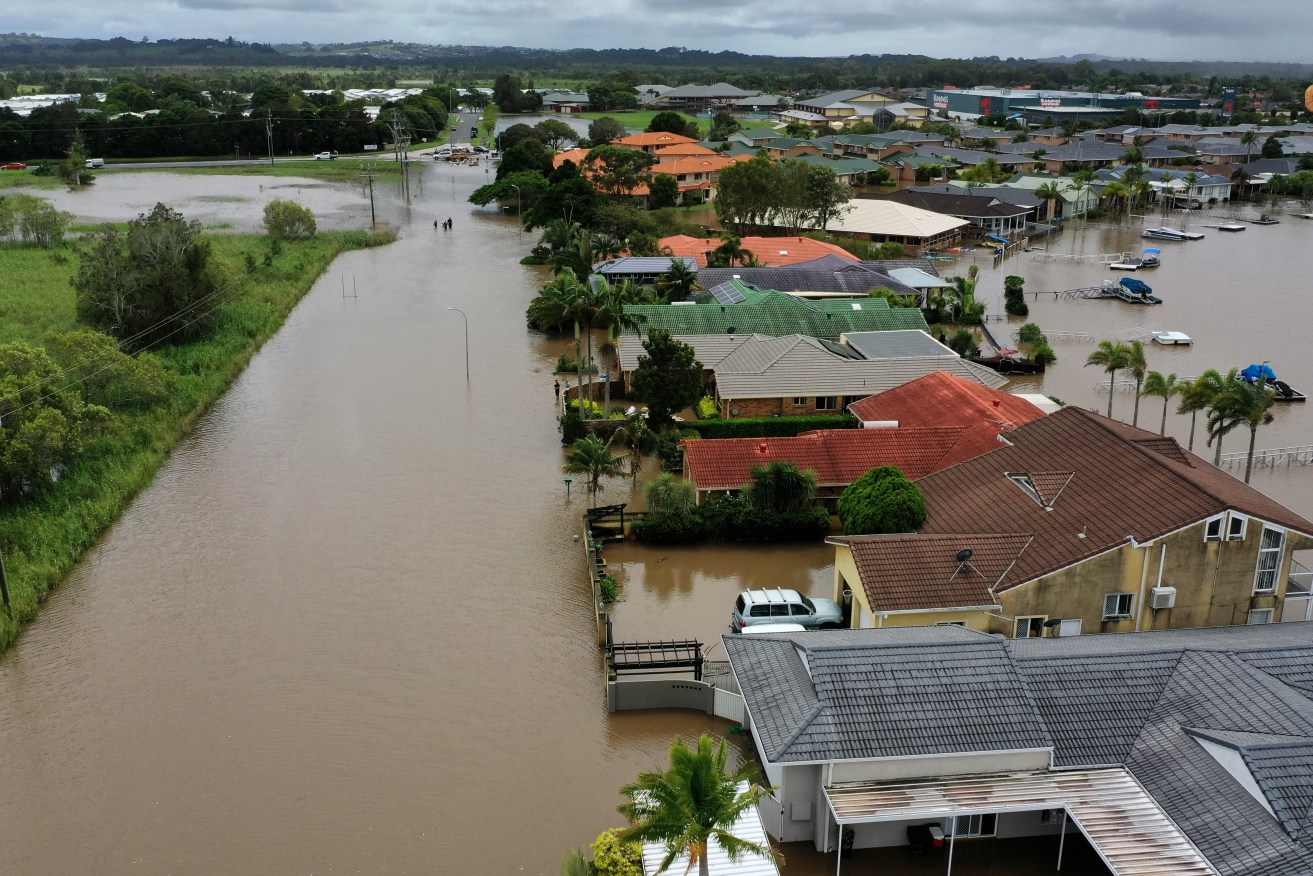Home insurance out of reach as climate disasters surge

A report has called for a change to house planning in parts of Sydney at growing risk to flooding. Photo: AAP
Some Australian families are spending two months of their annual income on home insurance, or going without cover, as more frequent disasters inflate premiums.
Nearly one in eight, or an estimated 1.24 million households, face an insurance affordability crisis, according to research released on Monday by the Actuaries Institute.
For those living in disaster-prone areas, including the Northern Rivers region, north Queensland and Western Australia, insurance premiums have risen up to 50 per cent in 12 months.
“A growing number of households, and particularly low-income households, can no longer afford premiums at all,” economist Nicki Hutley said.
“This means many families affected by a disaster can find themselves facing huge bills with no means to pay them, sometimes without a safe place to stay, all while processing the trauma of the event itself,” she warned.
Northern NSW farmer Peter Lake dealt with major floods in 2009, 2011, 2013, and 2021.
But he said nothing prepared him for February 2022 when extreme weather resulted in almost $7 billion in insured losses across Australia.
“We lost fences and fodder and were forced to sell most of our stock. Even when the waters receded we were flood free but not mud free. We battled mud for months,” Mr Lake said.
“We’ve had to weigh up not insuring our farm equipment, sheds and fences. We’re only insuring the house and a horse float now.”
Mr Lake, a member of Farmers for Climate Action, was quoted $19,000 a year to insure his farm.
State governments face pressure to cut levies and duties on insurance to make it more affordable and there are calls for funding to make homes, roads and bridges more able to withstand disasters.
Almost all (97 per cent) of funding is going toward post-disaster recovery and only three per cent toward risk mitigation.
The research showed the median home premium had its biggest jump in two decades, with home insurance premiums surging 28 per cent in the year to March, partly caused by soaring rebuilding costs.
The Actuaries Institute recommended better flood mapping and moving people out of harm’s way.
Overhauling land-use planning and strengthening building codes so all new homes are built to withstand the impacts of climate change could also relieve pressure on insurers.
Insurance Council of Australia CEO Andrew Hall said governments could provide relief on insurance costs by cutting insurance taxes.
Stamp duty and other state taxes on insurance can add 10 to 40 per cent to the cost of a premium depending on the state or territory.
“Insurers understand that people are hurting right now as cost of living pressures weigh heavy on monthly budgets, which is why addressing insurance affordability is a critical issue for our industry,” Mr Hall said.
Last week, a one-year federal parliamentary inquiry into the 2022 floods was established to get community feedback on insurers’ responses to the costliest natural disaster in Australian history.
– AAP








